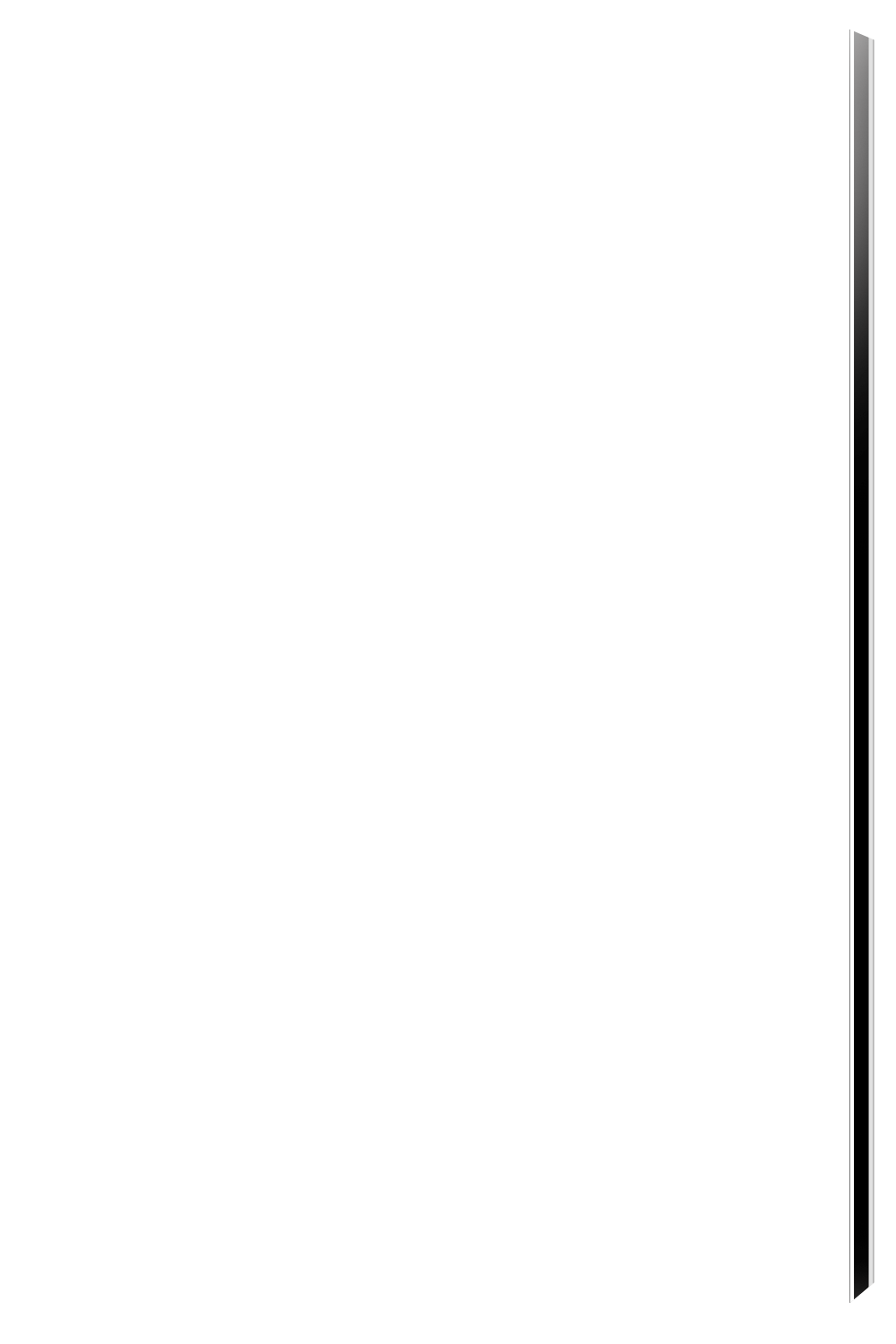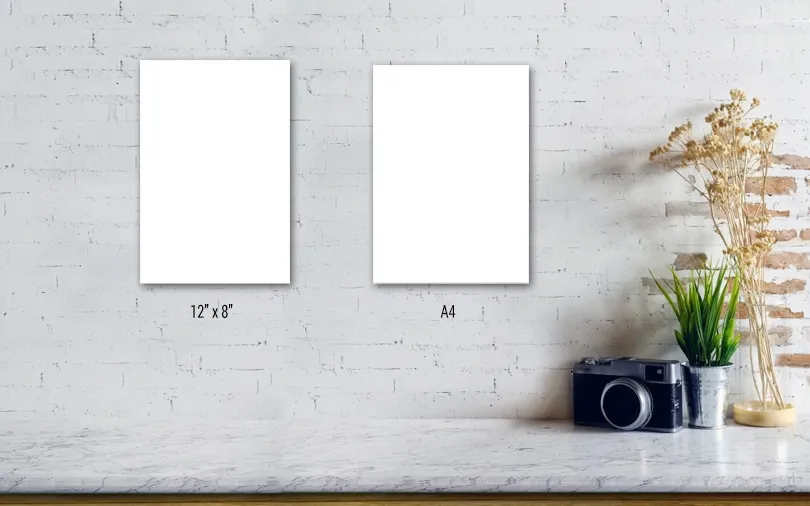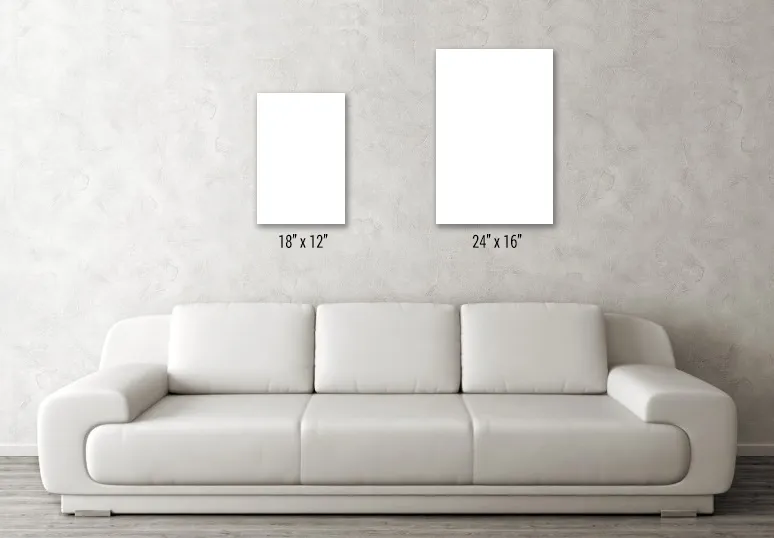






Enjoy a premium, ready-to-hang 12" x 8" Ralphs Cross metal wall art print with stunning clarity and durability.
Printed on lustre photographic paper, this semi-matt finish reduces glare while enhancing detail and colour depth.
Mounted onto a rigid 3mm Dibond base, combining a slim aluminium panel with a strong, lightweight acrylic backing for a sleek, professional look.
Printed edge to edge with no border for a clean, contemporary presentation.
Includes Velcro hanging strips - a popular and simple solution for displaying light weight prints.
(18" x 12 and 24" x 16" sizes come complete with a hidden subframe for hanging.)
Ralph's Cross, Westerdale Moor, North Yorkshire.
Located on Danby High Moor between Hutton-le-Hole and Castleton, it was first described in deeds from the early 13th century. The present-day cross could date from the 18th century though some historians date it to around 1200. It seems likely that a much older cross once stood on this site — perhaps an Anglo-Saxon one that was actually made of wood. At that time it may have been referred to as ‘The Roda Cross’ (Rude Cross). More than likely it acted as a medieval highway marker because it stands at the junction of two moorland roads (to Rosedale and Westerdale).
Explore other images from my Westerdale Metal Wall Art and Religious Architecture Metal Wall Art Collections.
Experience gallery-quality wall art with this premium Dibond-mounted print, designed for exceptional sharpness, durability, and a sleek modern finish. Choose from three high-quality paper options:
Each print is mounted onto a sturdy 3mm Dibond base, featuring a slim aluminium panel reinforced by a strong yet lightweight black acrylic backing. This rigid construction ensures long-lasting stability while maintaining a sleek, professional look.
18" x 12 and 24" x 16" sizes come complete with a hidden subframe which creates a modern floating effect when hung on the wall. Adjustable wall hangers are pre-attached, allowing for easy installation on any existing hook or screw. These hangers provide up to 10mm of adjustment both vertically and horizontally for effortless positioning.
A4 and 12" x 8" sizes will come with Velcro hanging strips - a popular and simple solution for displaying light weight prints.
Supplied without a border unless otherwise specified.
Optional lamination is available in satin or gloss to match your chosen paper, offering additional protection. However, lamination is not recommended for Fine Art Matt paper, as it will obscure its authentic texture.
| Available Sizes | A4, 12" x 8", 18" x 12", 24" x 16" |
| Paper Finishes | 270gsm Fujifilm Crystal Archive DPII Lustre 270gsm Fujifilm Crystal Archive DPII Gloss 308gsm Hahnemühle Photo Rag |
| Substrate | A lightweight composite of solid black 3mm PVC pressed between two aluminium sheets. 18" x 12" and 24" x 16" prints come complete with a subframe which sits compact on the back of the print giving the product a floating effect once hung on the wall. |
| Image Protection | Optional: Satin Matt or High Gloss to match your chosen paper. This is a thin film which is laminated on top of your print to give protection from scratches, fingerprints and UV rays. Lamination is not recommended for Hahnemühle papers as it will mask the papers authentic texture. |
| Hanging System | Adjustable wall hangers are pre attached to the subframe (where available) to sit easily on any hook or screw. The hangers allow for 10mm of adjustment both vertically and horizontally depending on orientation so you can position your print perfectly. A4 and 12" x 8" prints come with Velcro Velcro hanging strips - a popular and simple solution for displaying light weight prints. |
| Care Instructions | Handle with Clean, Dry Hands - Oils and dirt from your fingers can damage the surface. Cleaning: Lustre: Dust Gently with a Soft Cloth - A clean, dry microfibre cloth can remove dust without scratching the surface. |
| Eco Credentials | Hand-made on demand to prevent wastage. |
Ralphs Cross Dibond mounted wall art prints are printed to order and usually shipped within 3-4 business days. Please allow a further 2-3 days from the despatch date to receive your item (not including weekends or bank holidays).
Prices shown are inclusive of delivery to Mainland UK. Shipping to other available areas calculated at checkout.
Please check out the Delivery & Returns and Free Shipping pages for futher information.There are no reviews for this item yet, but here is just a small selection of what other happy Real World Art customers have to say!
Thrilled to bits with the picture , better than expected
I'm absolutely made up with the print I received from Real World Art. I went for the Koi Carp image - It's very evocative and they've totally captured the serenity you feel watching Koi. You can almost hear the babbling water! What's more, it's a top quality print, pin-sharp and looks great framed up. Couldn't recommend them any higher.. lovely to deal with.. thank you.
Brilliant! My print is beautiful. I initially ordered the wrong product due to my own error but Carol was so supportive and helpful I cannot recommend her/this company enough.
Fantastic artwork, great service, from ordering to delivery
Excellent Print arrived - High Quality - Very professional - Correspondence with Carol was helpful & informative. Would highly recommend Realworldart.
Absolutely wonderful photo! I bought it for my grandson but my daughter loved it so much that we decided it would be a waste to put it on his bedroom wall. The quality and detail demands a place where everyone can see it. I would definitely recommend this to family and friends. Thank you for the quick delivery too!